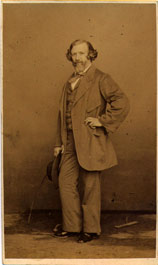
Dante’s terza rima.
While credit for the tercet is the subject of debate, Dante Alighieri was the progenitor of its first cousin, terza rima. Dante created terza rima as his measure of choice for The Divine Comedy. Terza rima interlocked tercets in each canto by rhyming the second line of one stanza with the first and third lines of its succeeding stanza – aba-bcb-cdc, and so forth. The pattern continued until the canto ended with a quatrain set in a wxyx rhyme scheme, as evidenced by the final seven lines of "The Inferno":
Ed io a lui: Poeta, io ti richieggio
Per quello Dio che tu non cognosceti,
Acciocch'io fugga questo male e peggioChe tu mi meni la dov'or dicesti,
Si ch'io vegga la porta di san Pietro,
E color cui tu fai cotanto mesti.
Allor si mosse, ed io li tenni retro.

Dante created terza rima for The Divine Comedy.
|

Robert Browning was among the most recent poets to include terza rima in their bodies of work.
|
From sonnets to free verse.
Because terza rima is difficult to write, it was modified into the simpler tercet, which spread across the Western world. Sonnet writers, particularly John Milton, Sir Edmund Spenser, and their followers, combined two tercets to make the six-line sestet that concluded their sonnets. Others modified the form into triplets, modifying all three lines. Many modern and present day poets have added a free verse approach by sprinkling rhyme schemes throughout lengthy strings of tercets, or dispatching them entirely.
